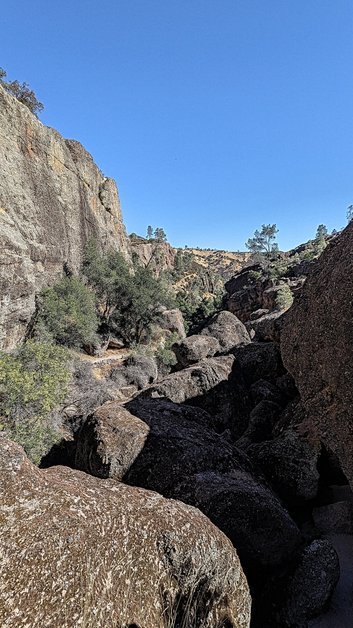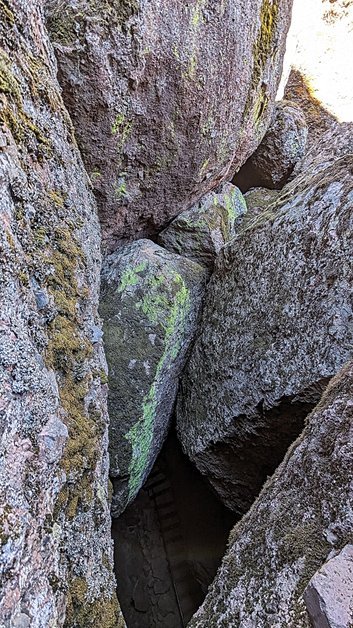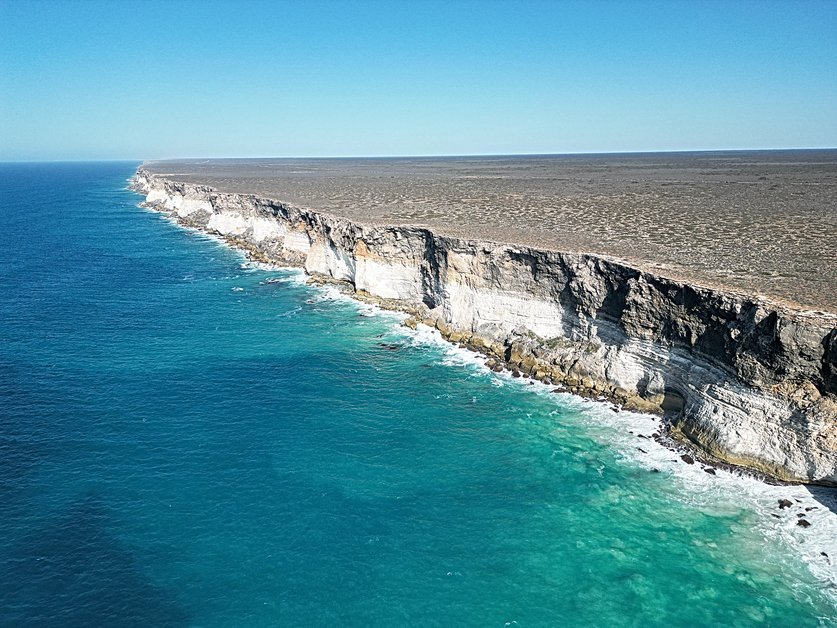Pinnacles National Park, located in Central California, is a lesser known national park for its striking rock formations, unique wildlife, and rich history. Whether you’re an avid hiker, a passionate rock climber, or simply someone who appreciates natural beauty, Pinnacles National Park offers something for everyone. But what truly sets this park apart is its fascinating origin story—a tale that stretches back millions of years, and the political journey that led to its designation as a national park.
The Geological Origins of Pinnacles National Park
The story of Pinnacles National Park begins over 23 million years ago during a period of intense volcanic activity in what is now known as the Neenach Volcano. Located about 195 miles southeast of its current location, the Neenach Volcano erupted, spewing lava and creating massive volcanic deposits. Over time, tectonic forces played a critical role in shaping the landscape. The San Andreas Fault, a major tectonic boundary between the Pacific and North American plates, slowly carried a portion of this volcanic field northward.

As the volcanic mass moved along the fault line, it fractured, tilted, and eroded, giving rise to the distinct spires and crags that define the park today. These formations, known as the Pinnacles, are the remnants of the ancient volcano, showcasing the power of both fire and earth in creating natural beauty.
The Unique Ecosystem of Pinnacles National Park
Pinnacles National Park isn’t just about its dramatic landscapes; it’s also a biodiversity hotspot. The park’s ecosystem is as varied as its topography, offering habitats for an array of plants and animals.
- Flora: The park is home to a wide range of plant species, from oak woodlands and chaparral to grassy meadows and riparian zones. In spring, the park bursts into color with wildflowers such as California poppies, lupines, and mariposa lilies.
- Fauna: Pinnacles is a sanctuary for wildlife, including some species that are rarely found elsewhere. The park is a haven for bird watchers, offering the chance to spot the majestic California condor, which was reintroduced to the area in 2003. In addition to condors, visitors can also see prairie falcons, golden eagles, and a variety of other birds. Mammals such as bobcats, coyotes, and gray foxes roam the park, and the rock formations are home to several species of bats.
- Caves: The talus caves at Pinnacles are another fascinating feature, formed by massive boulders that have fallen into narrow canyons, creating natural cave systems. These caves provide crucial habitat for bats, including the endangered Townsend’s big-eared bat.



Human History and Cultural Significance
Long before it became a national park, the area now known as Pinnacles was inhabited by Native American tribes, including the Chalon and Mutsun people. These indigenous groups used the land for hunting, gathering, and religious ceremonies, and they considered the towering spires and caves to be sacred.
The first European explorers arrived in the 18th century, but it wasn’t until the late 19th century that Pinnacles began to gain attention for its natural wonders. In 1908, President Theodore Roosevelt designated Pinnacles as a National Monument, recognizing its geological and ecological significance.
The Road to National Park Status: When and Why Pinnacles Became a National Park
Pinnacles remained a National Monument for over a century, quietly attracting visitors drawn to its rugged beauty and unique geological features. However, the push to elevate its status to a national park began in the early 21st century, driven by a growing recognition of its ecological importance and the need for greater protection and funding.
Why the Change?
The transition from a National Monument to a National Park was driven by several factors:
- Ecological Significance: The park is home to a variety of rare and endangered species, including the California condor. The reintroduction of the condor to Pinnacles in 2003 was a major conservation success story, highlighting the park’s role in preserving biodiversity.
- Public Awareness and Advocacy: Over the years, conservationists and local advocates worked tirelessly to raise awareness about the park’s unique features and the need for its protection. The designation as a national park would bring more resources and visibility to Pinnacles, helping to ensure its preservation for future generations.
- Legislative Action: The push for national park status gained momentum in Congress, with California lawmakers introducing legislation to re-designate Pinnacles as a National Park. The bill highlighted the park’s unique volcanic formations, its importance as a habitat for the California condor, and its cultural significance as reasons for the change.
When Did It Happen?
On January 10, 2013, President Barack Obama signed the legislation that officially designated Pinnacles as the 59th National Park in the United States. This change brought national recognition to the park and increased its visibility, drawing more visitors from across the country and around the world.

Route 146: A Key Consideration in the Pinnacles National Park Designation
When Pinnacles National Park was elevated from a National Monument to a National Park in 2013, Route 146, which provides access to the park, became an important consideration in the discussions surrounding the park’s new status. Route 146, a narrow, winding road that connects visitors to both the east and west entrances of Pinnacles, plays a crucial role in the visitor experience and the park’s overall accessibility. However, this road has also presented challenges that were carefully considered during the push for national park status.
Route 146: The Geographic Challenge
One of the unique aspects of Pinnacles National Park is that its two primary entrances—east and west—are not connected by a through road. Route 146 is the main access road to both entrances, but due to the rugged terrain and the layout of the park, the road does not connect the east and west sides internally. This means visitors must exit the park and drive a considerable distance around to access the opposite side, which can be inconvenient for those looking to explore the entire park in a single visit.
The narrow and winding nature of Route 146, particularly on the western side, also presents challenges for large vehicles, such as RVs and trailers, which are common among national park visitors. The road’s limited width and sharp turns have raised safety concerns, especially during peak visitation times when traffic increases.
The Impact on Visitation and Accessibility
During the discussions about elevating Pinnacles to national park status, the limitations of Route 146 were a significant factor. There were concerns that the increased visibility and visitor numbers that come with national park status could lead to traffic congestion, increased wear and tear on the road, and a higher risk of accidents. Local communities and park management had to consider how to manage this expected influx while maintaining the safety and accessibility of Route 146.
Improving Route 146 was seen as a potential necessity to accommodate the anticipated rise in tourism. However, any modifications to the road would require careful planning and environmental assessments to avoid damaging the park’s delicate ecosystems. The road winds through sensitive habitats, including areas critical to the California condor and other wildlife, making any expansion or alteration a contentious issue.
Proposed Solutions and Management Strategies
- Traffic Management: Implementing traffic management systems, such as timed entry or shuttle services, was proposed as a way to reduce congestion and minimize the impact on Route 146. These measures would help control the number of vehicles on the road at any given time, improving safety and reducing environmental impact.
- Infrastructure Improvements: Some proposed improvements included widening certain sections of the road, adding guardrails, and enhancing signage to improve safety. However, these proposals faced opposition from environmental groups concerned about the impact on the surrounding habitats.
- Visitor Education: Educating visitors about the limitations of Route 146, including the lack of a through road between the east and west entrances, was emphasized as a critical component of managing expectations and reducing traffic-related issues. Information about the road’s conditions, along with advice on how to navigate it safely, was integrated into park literature and online resources.
- Alternative Access Options: Discussions also touched on the possibility of developing alternative access points or connecting roads within the park. However, the topography and environmental sensitivity of the area made such options difficult to pursue without significant disruption to the landscape.
The Current Situation
Since the park’s re-designation, Route 146 remains a key consideration for Pinnacles National Park management. The road’s limitations are still in place, and while visitation has increased, efforts to manage traffic and maintain the road have been ongoing. The park continues to promote visitor awareness of the road’s challenges, and seasonal maintenance helps to address the wear and tear that comes with increased use.
While the idea of significant road improvements or new infrastructure within the park has been largely set aside due to environmental concerns, Route 146 continues to be a focal point in discussions about the park’s future. Balancing the needs of visitors with the imperative to protect the park’s natural and cultural resources remains a delicate act, with Route 146 at the heart of this balancing effort.
Outdoor Activities at Pinnacles National Park
Pinnacles National Park is a paradise for outdoor enthusiasts, offering a wide range of activities:
- Hiking: With over 30 miles of trails, Pinnacles offers hikes for all skill levels. Popular routes include the High Peaks Trail, which takes hikers through narrow rock passages and offers stunning views of the surrounding landscape, and the Bear Gulch Cave Trail, where visitors can explore the park’s unique cave systems.
- Rock Climbing: The park’s rugged cliffs and spires make it a favorite destination for rock climbers. The volcanic rock formations provide challenging climbs for both beginners and experienced climbers.
- Bird Watching: As mentioned earlier, Pinnacles is a haven for bird watchers. The park is one of the few places where you can see the endangered California condor in the wild. The birds are often seen soaring above the high peaks or perched on rocky outcrops.
- Camping: Pinnacles offers a well-maintained campground with sites for tents, RVs, and group camping. Staying overnight allows visitors to experience the park’s serenity and stargaze in the clear night skies.
- Caving: Exploring the talus caves is a unique experience. The Bear Gulch and Balconies caves are open seasonally, depending on bat activity, and provide an exciting adventure for those willing to navigate their dark, winding passages.

Visiting Pinnacles National Park
Pinnacles National Park is accessible from both the east and west entrances, though the roads do not connect through the park. The east entrance is located near the town of Hollister, while the west entrance is closer to Soledad. Each side offers different experiences and access to various trails and attractions.
When to Visit
The best time to visit Pinnacles is during the spring or fall when temperatures are moderate, and wildflowers are in bloom. Summers can be extremely hot, with temperatures often exceeding 100°F, while winters are cooler but can bring rain and occasional frost.
What to Bring
If you plan to hike or camp, be sure to bring plenty of water, sun protection, and sturdy footwear. The park’s rugged terrain can be challenging, and it’s essential to be prepared for varying weather conditions.
Safety Tips
While exploring the caves and rock formations, be mindful of your surroundings. Some trails and caves can be narrow and steep, and rattlesnakes are occasionally spotted in the area. Always stay on designated trails and carry a flashlight if you plan to explore the caves.

Strategic and Political Considerations in Pinnacles’ Designation
The designation of Pinnacles as a national park, like many decisions involving public lands and federal recognition, involved a mix of political considerations that could include negotiations, trades, or political favors. While the exact details of any behind-the-scenes dealings specific to Pinnacles are not widely documented, the process of re-designating a National Monument as a National Park typically involves several layers of political maneuvering. Here’s how such factors could have played a role:
Support Building and Political Alliances
To push the legislation for re-designation through Congress, supporters of Pinnacles National Park likely had to build a coalition of political allies. This often involves negotiating support from other lawmakers who may have their own priorities or projects needing attention. In such cases, it is not uncommon for political trades to occur, where support for one piece of legislation is exchanged for backing on another bill, appropriations, or policy initiative.
For instance, a lawmaker who needed support for a local infrastructure project or other legislation might agree to support the Pinnacles re-designation in exchange for reciprocal backing. These kinds of arrangements are a routine part of legislative politics, where compromise and negotiation are essential to moving bills through the often gridlocked Congress.
Local vs. National Interests
In pushing for Pinnacles to be designated as a national park, local California representatives would have needed to secure support from their colleagues in Congress, who might not have seen the immediate value in protecting a relatively small and less-known area. To gain broader support, advocates for the park might have had to make concessions or offer support for initiatives that were of interest to lawmakers from other states or regions. This kind of bargaining is often necessary to gain the bipartisan support required to pass such legislation.
Conservation Groups and Lobbying
Conservation groups likely played a significant role in lobbying for Pinnacles’ elevation to national park status. These organizations, such as the Sierra Club or other environmental NGOs, often have strong relationships with lawmakers, particularly those known for environmental advocacy. In exchange for their support, these groups might have offered political backing to lawmakers in the form of endorsements, campaign support, or grassroots mobilization efforts.
Such groups might also have engaged in behind-the-scenes lobbying, using their influence to secure the necessary votes in Congress. This could involve negotiating with lawmakers on the specifics of the legislation, ensuring that it aligns with broader conservation goals, or addressing concerns that might have otherwise led to opposition.
Economic Interests and Local Support
Local economic interests, such as businesses and tourism boards in the surrounding areas, would have been strong advocates for the national park designation, given the economic benefits associated with increased tourism. These groups might have worked closely with lawmakers to ensure the passage of the legislation, potentially offering political support or mobilizing local constituents to pressure their representatives.
Additionally, local and state politicians who saw economic and environmental benefits from the designation might have used their influence to garner support within the state’s congressional delegation. In return, these politicians might have sought federal funding or support for other state-specific projects, creating a network of political favor-trading.
Strategic Political Calculations
For the Obama administration, the designation of Pinnacles as a national park fit into a broader strategy of environmental conservation and legacy-building. The administration designated numerous new national parks and monuments as part of its environmental agenda. In exchange for supporting Pinnacles’ designation, lawmakers or interest groups might have sought commitments from the administration on other issues, such as federal funding allocations, regulatory decisions, or support for other conservation efforts.
It’s also possible that the administration or key lawmakers used the Pinnacles designation as a way to build goodwill with environmental constituencies, ensuring continued support from these groups in future elections or policy battles.
Balancing Competing Interests
Any major land designation typically involves balancing the interests of multiple stakeholders, including federal, state, and local governments, as well as private landowners and businesses. In the case of Pinnacles, this could have involved negotiating compromises on land use, ensuring that private property rights were respected, or addressing concerns from local industries such as agriculture or tourism.
Such negotiations often involve a degree of political trading, where support is garnered in exchange for assurances that other interests will be protected or that additional resources will be provided to address any concerns arising from the new designation.
Why Pinnacles Needed Federal Protection
The designation of Pinnacles as a national park, thereby granting it federal protection, was driven by several important factors. Federal protection is critical for preserving the park’s unique natural and cultural resources, ensuring that these areas remain intact for future generations. Here’s why Pinnacles needed federal protection:
Protection of Unique Geological Features
Pinnacles National Park is home to some of the most unique geological formations in North America, primarily remnants of a 23-million-year-old volcanic field. These dramatic rock spires, cliffs, and talus caves are fragile and irreplaceable natural features. Federal protection ensures that these formations are safeguarded against activities that could cause irreversible damage, such as mining, quarrying, or other forms of land development.
Conservation of Endangered Species
One of the most significant reasons for Pinnacles needing federal protection is its role in the conservation of endangered species, particularly the California condor. The park is a critical habitat for this bird, one of the most endangered in the world. The reintroduction of condors to Pinnacles in 2003 was a major success, but their survival depends on maintaining and protecting their habitat from human interference, pollution, and habitat destruction.
In addition to the California condor, Pinnacles is home to other species that benefit from federal protection, including the Townsend’s big-eared bat and various native plant species that are rare or endangered. Federal oversight ensures that these species and their habitats are managed according to the highest conservation standards.
Prevention of Resource Exploitation
Without federal protection, the land that makes up Pinnacles could be vulnerable to resource exploitation, such as mining, logging, or commercial development. These activities could drastically alter the landscape, harm wildlife habitats, and degrade the natural beauty of the area. National park status provides strong legal protections against such activities, ensuring that the park’s natural resources are preserved.
Preservation of Cultural and Historical Sites
Pinnacles is not only a site of natural wonder but also of cultural and historical significance. The area has been inhabited for thousands of years, originally by Native American tribes such as the Chalon and Mutsun people. These tribes used the land for hunting, gathering, and religious ceremonies. Federal protection ensures that these cultural sites are preserved, and their significance is recognized and respected.
Moreover, national park status helps protect archaeological sites and artifacts from looting, vandalism, and destruction, which might be more difficult to enforce without federal oversight.
Management of Increasing Tourism
As public interest in Pinnacles grew, particularly after its designation as a national park, there was a need for structured and sustainable management of tourism. Without federal protection and oversight, the increase in visitors could have led to environmental degradation, overcrowding, and a diminished visitor experience.
The National Park Service (NPS) is equipped with the resources and expertise to manage these challenges effectively. With federal protection, the NPS can implement strategies to control visitor impact, maintain trails and infrastructure, and ensure that the park remains a safe and enjoyable place for the public.
Enhanced Funding and Resources
National parks receive more federal funding and resources compared to other types of protected areas like national monuments. This funding is crucial for ongoing maintenance, conservation efforts, research, and visitor services. Pinnacles needed federal protection to ensure that it could access these resources, which are essential for preserving the park’s integrity and enhancing the visitor experience.
Federal protection also enables the park to participate in national programs and initiatives that support conservation, education, and public outreach. These programs help raise awareness about the importance of protecting natural and cultural resources, both within Pinnacles and across the nation.
Legal Protections and Enforcement
Federal protection under the National Park Service comes with strict legal frameworks that govern how the land can be used and what activities are permitted. These laws, such as the National Park Service Organic Act, provide a robust legal basis for protecting the park from activities that could harm its resources or detract from its natural beauty.
With federal protection, Pinnacles benefits from a higher level of law enforcement presence, ensuring that regulations are followed and that illegal activities, such as poaching, unauthorized development, or environmental damage, are prevented or addressed promptly.
Long-Term Preservation for Future Generations
One of the primary goals of federal protection is to ensure that natural and cultural resources are preserved for future generations. Pinnacles National Park, with its unique combination of geological features, biodiversity, and cultural heritage, is a national treasure that deserves to be protected. Federal oversight guarantees that the park is managed with a long-term perspective, focusing on sustainability and conservation.
This ensures that future generations will be able to enjoy the park in the same way as today’s visitors, experiencing its beauty, learning about its history, and understanding the importance of preserving such special places.
Natural Resources in Pinnacles National Park
Pinnacles National Park, like many protected areas, contains various natural resources, but its unique geology and ecology make it particularly sensitive to exploitation. The park’s primary resources include geological formations, biodiversity, and some minerals. However, due to its status as a national park, exploitation of these resources is heavily restricted or entirely prohibited to preserve the park’s natural state and ecological integrity.
Geological Resources
Pinnacles National Park is known for its striking rock formations, which are the remnants of an ancient volcanic field. The volcanic rocks, such as rhyolite, tuff, and breccia, are of geological interest, but they are not particularly valuable in terms of extractive industries. While there might be small-scale mineral deposits within these formations, they are not of commercial significance compared to other regions in California known for mining.
Mineral Resources
Although Pinnacles is not known for rich deposits of valuable minerals like gold or silver, there could be some lesser minerals present in the area, such as those associated with volcanic activity. However, even if valuable minerals were discovered, their extraction would be highly unlikely due to the stringent protections afforded by national park status.
In general, the park’s geology does not suggest the presence of significant quantities of commercially valuable minerals, which reduces the risk of exploitation. Moreover, any mining activities would be incompatible with the park’s conservation goals and are therefore prohibited.
Water Resources
Water is a critical resource within Pinnacles National Park, supporting its unique ecosystems, including the habitats of endangered species like the California condor. While the park does have some water resources, such as seasonal creeks and springs, these are not abundant enough to be considered for large-scale exploitation.
Water within the park is primarily used to sustain the local ecosystems and provide for the needs of visitors. Extracting water for commercial purposes, such as bottling or irrigation, would be highly detrimental to the park’s environment and is therefore not permitted.
Biological Resources
The park’s biodiversity, including its flora and fauna, could be considered a natural resource in the broadest sense. However, federal protection under national park status means that these resources are protected from exploitation. The collection of plants, animals, or other biological materials is strictly regulated and typically only allowed for scientific research with appropriate permits.
This protection ensures that the park’s ecosystems remain intact, supporting the park’s role as a habitat for species like the California condor and other wildlife. The prohibition of activities like logging or hunting further ensures that the park’s biological resources are not exploited.
Potential for Energy Resources
Given its volcanic history, there might be some potential for geothermal energy resources in the region. However, Pinnacles is not known to be a significant site for geothermal energy production, and even if such potential existed, development of geothermal energy facilities would be incompatible with the park’s protected status.
Oil and gas extraction is also unlikely in Pinnacles due to the lack of significant petroleum deposits in the area. Additionally, the federal protections that come with national park status would prevent any exploration or extraction activities.
Why Federal Protection Matters
While Pinnacles may not have extensive commercially valuable natural resources, the federal protection that comes with its designation as a national park ensures that all of its natural resources—geological, biological, and hydrological—are safeguarded from exploitation. The primary goal of this protection is to preserve the park’s natural beauty, ecological integrity, and cultural significance.
Without these protections, even small-scale exploitation could lead to significant environmental damage, disrupting the fragile ecosystems and degrading the geological features that make Pinnacles unique. The national park designation ensures that the park remains a place for conservation, recreation, and education, free from the pressures of resource extraction.

Pinnacles National Park represents the confluence of nature, politics, and economics. While the park’s new status has brought many benefits, it also poses ongoing challenges that will require careful management. The story of Pinnacles is a reminder that conservation efforts are never static; they require constant vigilance, adaptation, and, above all, a commitment to preserving our natural heritage for future generations.
The elevation of Pinnacles from a National Monument to a National Park in 2013 was as much about politics and economics as it was about conservation. While the park’s stunning landscapes and unique wildlife undoubtedly deserve protection, the motivations behind its re-designation reflect a broader narrative about the ways in which natural resources are valued, managed, and leveraged for various interests. In the end, Pinnacles National Park is not just a place of natural beauty; it’s a case study in the complex dynamics of preservation, politics, and progress.
As you explore Pinnacles National Park, you’re not just visiting a place of natural beauty—you’re stepping into a story that began long before humans walked the Earth, a story that’s still being written in the rock and soil beneath your feet. The park’s designation as a national park in 2013 is a reminder of the importance of preserving such natural treasures, ensuring that future generations can continue to experience the awe and wonder that Pinnacles inspires.




